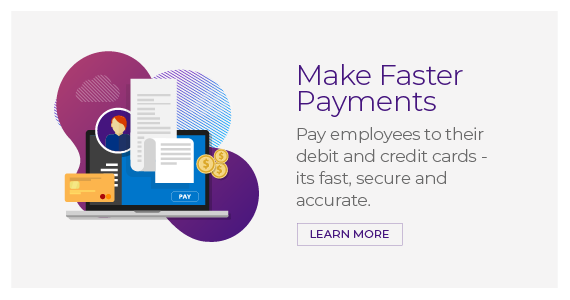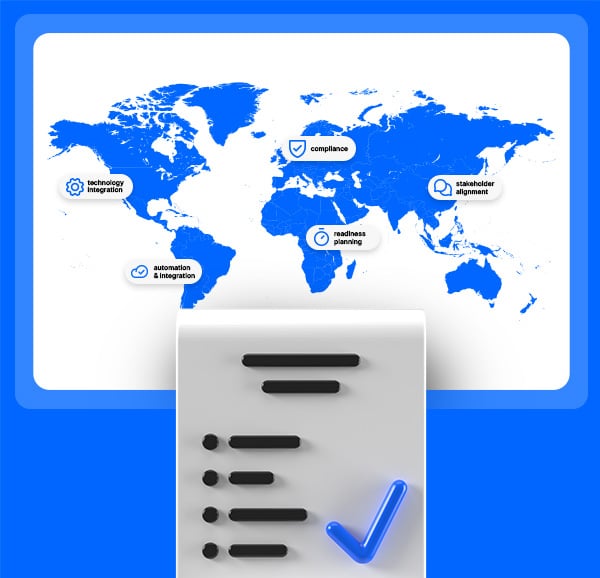“Some things can only be seen in the shadows”. The Spanish author Carlos Ruiz Zafon wasn’t writing about payroll per se when he wrote this, but it does serve as an excellent starting point for why shadow payrolls exist. Any business that deploys employees overseas is likely to encounter the requirement to run a shadow payroll.
So who would be included on one, and what are they for?
Candidates for inclusion
The requirement to run a shadow payroll gets straight to the heart of the employer’s role in the tax system. Put simply, the employer is required to follow the rules of any withholding system that local tax law has mandated they must enact against employee’s salaries. This doesn’t mean that the taxpayer’s obligations have been met in full, or indeed that those obligations haven’t been exceeded by the requirements of the withholding scheme. The employee will make any corrections required through the local tax return process. Withholding obligations often extend past the direct employees of an employer, and may be extended to employees temporarily on international assignment who are being hosted by a local company.
Example
Hank is sent on assignment from ABC USA Inc to ABC Ireland Ltd for one year. During this year he will work at the premises of ABC Ireland Ltd under the direct supervision of one of their managers. He remains paid in US dollars on the US payroll. As Hank will be in Ireland for more than 183 days, he will be liable for Irish Income Tax and Universal Social Charge. Under s985 of the Taxes Consolidation Act, ABC Ireland Ltd are deemed to be the relevant party who must ensure that the Irish PAYE scheme is operated against Hank – it doesn’t matter that they don’t actually pay Hank. This is because ABC USA Inc are not resident or present in Ireland.
What types of employee might a company have an obligation to operate a shadow payroll for? This will depend upon the withholding legislation in the jurisdiction being visited, but typical groups of visitors to look out for include:
- Short, medium or long term assignees sent on a formal assignment to the host country
- Frequent business visitors whose pattern of visits or the nature of the work they are performing preclude exclusion from local tax under the relevant Double Taxation Agreement
- Multi state workers (those who routinely work in 2 or more countries)
- Business visitors from abroad where the company has created branches rather than separate legal entities. Such visitors are technically employed by the host entity and as such are usually subject to withholding on visits to the country where the branch is incorporated
- Employees working from home when home is in another country to their employer
Whilst those sent on a formal assignment will usually be easy to identify, other types of visitor may not be obvious for the payroll department to spot. If a withholding obligation does exist for them, failure to operate the local withholding scheme can expose the business to significant compliance issues. Being able to identify potential candidates for inclusion on a shadow payroll is therefore vital.
So – What exactly is a Shadow Payroll?
A shadow payroll is one that is run and reported to the authorities to ensure that a local hosting entity will fully meet its obligations under local withholding rules. It will calculate liabilities for local taxes and social security contributions as appropriate without necessarily delivering any net pay to the employee. This is because the “true” payroll remains in action back in the home country, and it is this payroll that would deliver the employee their net pay. The host entity will need to determine exact remuneration received by the employee subject to such calculations. The deductions calculated from the shadow calculation will then either be paid on behalf of the employee via a company tax equalization scheme, or if the employee is to be personally liable for such taxes, the amounts will be passed back to the home country payroll for deduction from the employee’s salary there.
A Shadow Payroll is not just confined to being run in a host country, it could instead be run back in the home country. Many companies insist that when an employee is sent on assignment abroad, that they receive all of their cash salary via the host country payroll to make tax compliance easier in that jurisdiction. However, there could be continuing obligations back in the home country. For example, where an employee has had a certificate of coverage issued under the terms of a Bilateral Social Security agreement ensuring that the payment of social insurance contributions continues under the home scheme rules (with a corresponding exemption in the host jurisdiction.
What will a Shadow Payroll calculate or report?
The purpose of a shadow payroll may extend much further than simply calculating tax in a second country. The provision of a regular detailed electronic submission of employee data generated from the processing of employee payroll is becoming the norm across the globe. Such reporting is likely to need to include employees on secondment – both in the home and host country. Reasons for including people on a shadow payroll include:
- To report taxable pay and calculate income tax and other supplementary taxes
- To report assessable earnings, calculate social insurance liabilities and report these details to create a social security record for an employee
- To report contributions, earnings and other employee relevant data for Company benefit schemes such as pension plans
- To include the employee on other employer relevant levy calculations based on headcount
- To report contractual details and working time data for the purposes of monitoring adherence to labor law and within Europe compliance with the Posted Workers Directive
- To include the employee in national statistical reporting required by government
- To include the employee in any special year end reports required by the local authorities
Examples
- Hank is paid in US dollars on his home USA payroll. His earnings are subject to Irish tax during his assignment. His employer must report the euro equivalent of the dollars he has earned on the US payroll to the Irish authorities, and calculate Income Tax and Universal Social Charge due in Ireland
- Amy is sent on assignment to the USA from the UK for two years. She has a Certificate of Coverage issued under the UK/USA bilateral social security agreement, and she and her employer remain liable for UK National Insurance. Her employer shifts all of her pay onto the US payroll to ease administration in the USA. A shadow payroll will still be required back in the UK to report the Sterling equivalent of her US earnings, and to calculate UK National Insurance due – the payroll reporting creates her social security record on the UK government’s computer system.
- Amy is also in the company’s UK pension plan. The pension provider only accepts earnings and contribution information for members via a data feed from the UK payroll. Amy’s shadow payroll record will also be able to provide this
- Marek is sent on a one year assignment from Poland to Germany as a Posted Worker. He remains covered by his Polish employment contract. As Marek’s employer has more than 25 employees, they are subject to the PFRON earnings reporting requirements regarding the hiring of disabled workers, and also the payment of the penalty charge should the company not meet the necessary 6% hiring threshold. Marek needs to be included within this report which will be taken from the Polish payroll system
- Eleni is sent on assignment to Belgium from Greece for 4 months. She holds an A1 certificate and her presence in Belgium will comply with the requirements of the Belgium/Greece Double Taxation Agreement so no Belgian social insurances or taxes will be due. Eleni will still need to be reported to the authorities in Belgium via a LIMOSA declaration and information regarding working time will also need to be passed to the Belgian authorities
- Sanjay is sent on assignment from India to Singapore. He remains paid on the Indian payroll in Rupees, but is provided with a car and apartment in Singapore by his employer. Details of these benefits will need to be reported at Year End to IRAS in Singapore
Split Payrolls
It is common for employers to pursue a split payroll approach. Many assignees will have ongoing financial commitments back home, but will also require funds to live on, payable in local currency, in the host country. The challenge in splitting the payroll is that both payrolls will potentially have to take into account the amounts paid on the other payroll, and shadow for them.
Example
Amy has her salary converted to US dollars at a guaranteed exchange rate of £1 = $1.50. She asks her employer to pay £800 of her monthly salary via the UK payroll to her UK bank account, with the remainder paid in US dollars on the US payroll. Her UK payroll will have to add a “shadow” amount on each month to reflect the actual Sterling value of the US dollars using the prevailing exchange rate rather than the fixed rate the Company has granted Amy, so that this and the £800 Sterling are used to calculate UK National Insurance. Conversely, in the USA the £800 Sterling will need to be added as a “shadow” amount for the purposes of correctly calculating US taxes, again converting the Sterling using the prevailing exchange rate each month.
Identifying Correct Shadow Pay
One of the most challenging aspects of processing a shadow payroll is identifying the correct amount to start the shadow calculation from. The best approach is to “follow the money”. Whilst contractual documentation can be useful for identifying potential benefits, in order to perform an accurate statutory calculation you should focus on identifying the following:
- Cash sums paid to the individual
- Taxes and social insurance contributions paid
- Deductions such as pension contributions which have been paid to a third party on behalf of the employee
- The provision of any benefits in kind which are subject to taxes in the shadow jurisdiction
- The meeting of any pecuniary liability (whereby the employer pays a bill which is in the name of the employee) – an example being the payment of school fees for an employee’s children
All of this can be difficult to accurately identify, especially if you are only provided with local language documentation. It will be necessary to identify every element on pay slips and contractual documentation to determine whether or not it needs to be reflected in your shadow payroll records.
Example
Lars Jensen is sent on assignment from Denmark to the UK for two years. He continues to be paid on the Danish payroll, but becomes liable for UK income tax under PAYE. His Danish pay slip reveals the following two benefits in kind which have been processed in Denmark:
- Fri telefon
- Fri Benzin
In Denmark, the provision of a mobile telephone (fri telefon) to an employee, even if it is primarily for business use always results in a benefit in kind charge valued at DKK 2,800 pa. However, in the UK an employer may provide one mobile telephone to an employee free of tax. As such, although this item has been correctly included on the Danish payroll, it does not need to be reflected on the UK shadow payroll
Where an employee is provided with any fuel for a company car (fri benzin), this results in a varying benefit in kind charge determined by the amount of fuel provided. However in the UK, the valuation of the provision of fuel for private use is performed by reference to a percentage of the benefit in kind charge made for the car – the payslip here has alerted us to the provision of the benefit, but we cannot simply take the amount shown in Danish Kroner for the shadow UK payroll, and must instead valorise the benefit using UK rules.
Special schemes to make life cheaper or easier
If you have a reporting and payment obligation in a particular jurisdiction you should investigate whether there are any special schemes available that may make the amount of taxes lower. Many countries wish to encourage the prompt registration of foreigners into their taxation schemes by offering in effect a discount. Others wish to encourage the posting of international employees to their country by offering generous tax discounts to assist with the costs of assignment. All can be reflected on shadow payroll arrangements.
Examples
- The Beckham Law in Spain allows assignees to opt for a flat rate of tax of 24% rather than the usual progressive rates on incomes up to €600,000
- Poland allows non residents with employment income arising in Poland to opt for a flat rate tax of 20%
- The Netherlands offers the 30% Expat facility allowing 30% of the gross salary package to be paid tax free to cover typical assignment costs such as accommodation
All require prompt registration and payroll reporting of the employee.
Perhaps the greatest challenge on running a shadow payroll is the calendar. Payroll reporting typically requires all relevant pay to be reported and included in tax/social insurance calculations at the time that it is provided. That can be a difficult target to hit where you are not in control of paying the salary because it carries on being processed in the home country, possibly to a different pay cycle to the one deployed in the host country. The correct pay, including exchange rate conversion will have to be identified, and for most companies in effect that will mean running at least one month in arrears. Will this meet the strict rules of the host jurisdiction?
Some countries recognize this challenge and offer variants to the standard payroll calculation and reporting process to take account of these challenges. The UK in particular offers employers the option of modified PAYE and NIC’s schemes. These allow the employer to estimate earnings, perform statutory calculations based on these estimates, correct estimates towards the end of the tax year, and file final numbers via a tax return or NIC Settlement Return after the end of the year.
Examples
- Hank is sent on a further assignment from the USA to the UK. He remains payable on the US payroll. His UK host employer uses a monthly payroll cycle, whereas Hank is paid semi-monthly on the US payroll. His UK host employer can use a modified PAYE scheme to estimate the Sterling equivalent and perform any statutory calculation of Income Tax. They must report Hank’s pay information for the shadow payroll by the 22nd of the following month rather than meeting the usual reporting deadline of the actual payment date.
- Amy’s ongoing UK National Insurance liability can be calculated and reported utilising a modified NIC scheme with HMRC. Her salary which is paid in US Dollars can be estimated into Sterling, and if necessary her employer can submit a NIC Settlement Return after the end of the tax year to correct the estimate.
Conclusion
The obligations to operate PAYE withholding schemes around the globe are comprehensive, and having employees move into different jurisdictions is likely to create reporting and payment obligations which can only be met through payroll systems.
Shadow payrolls need careful attention, and the best approach is to be inquisitive and ask lots of questions. Remember that a copy of the employee’s pay slip from the other jurisdiction is usually the best source of truth. International employees can certainly seem to meet Zafron’s description of being hidden from sight, but eventually will turn up on some statutory authority’s radar. So make sure that everyone who needs to be is “seen in the shadow”!





